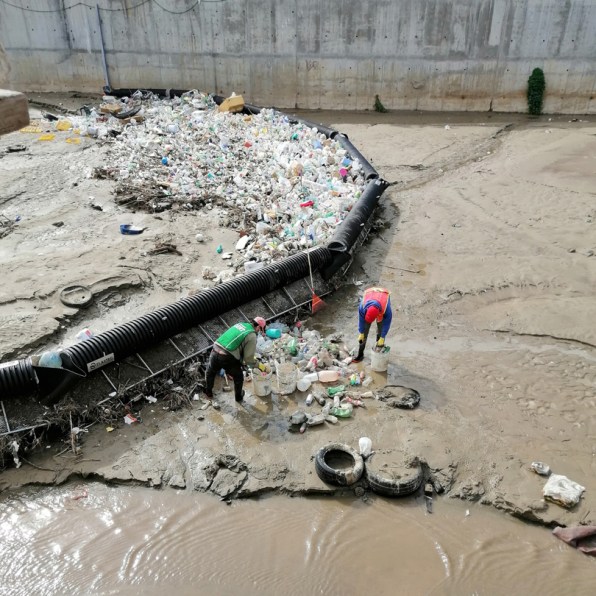
It’s one of eight pilot projects around the world that are pulling trash out of rivers before it reaches the ocean.
Wanda Díaz is the first trash wheel in Latin America, affectionately named after “Wheel + Action” and the river it sits on, the Juan Diaz River. [Photo: Chemolex]
Floating at the side of a river that winds through densely populated neighborhoods in Panama City, a 52-foot-long robotic “trash wheel” sucks up plastic from the water and pulls it up a conveyor belt to be recycled. (The design, which runs on hydropower and uses solar power as a backup, is a tweaked version on the aptly-named Mr. Trash Wheel, which first debuted in Baltimore in 2014.) A camera system will soon use artificial intelligence to identify the garbage—from plastic bottles to toys—to gather data that can help design new strategies to eliminate plastic waste before it reaches the environment.
[Image: Chemolex]It’s the newest in a series of eight pilot projects around the world testing different ways to remove plastic waste from rivers before it can reach the ocean. In another project, on the Citarum River in Indonesia, floating booms guide plastic to the riverbank. Installed earlier this year, the system has already captured more than 26,000 pounds of waste. In Jamaica, a floating barrier captures trash at Kingston Harbour. In Nairobi, Kenya, 10 trash booms in tributaries of the Athi River have captured more than a million pounds of plastic.
Jamaica [Photo: Chemolex]“The rivers in Nairobi didn’t look like rivers before our partners came along,” says Molly Morse, senior manager at the
Benioff Ocean Science Laboratory, the organization coordinating the global pilots in a program called the
Clean Currents Coalition. “They looked like dump sites. They were just completely covered in trash so you can’t see the water.” Chemolex, a Kenyan organization working on the Nairobi project, is using the plastic to make bricks to pave new walkways next to the river, where it’s helping create new parks and community gardens.
Nairobi [Photo: Chemolex]The project aims to gather data about how each approach works, both to directly clean up water and to help influence policy. “Our big goal here is to prevent plastic pollution from getting into the environment in the first place,” Morse says. “So each project is also using data that they’re collecting, and their experiences of actually working on the water with the trash, to educate their community members and leaders about this problem . . . so more can be done upstream to prevent the production of more single-use plastic.”
Mexico [Photo: Chemolex]In Ecuador, a nonprofit working on one of the river cleanup pilots found that plastic water bottles were one of the most common items found in the water, so it started working with partners to install refill stations for reusable bottles. In Tijuana, Mexico, a group capturing plastic trash at a biodiversity hotspot is pushing local government and companies to install better recycling infrastructure. In Kenya, plastic waste is still a challenge despite a ban on single-use plastic bags in 2017 and a broader plastic ban in protected areas in 2020; groups there are meeting with diaper manufacturers after seeing that diapers are a major source of the waste in local rivers.
“Plastic pollution is a wicked problem that’s going to require solutions all along the lifecycle,” says Morse. That includes finding ways to eliminate single-use plastic, improving access to recycling, and, at least for now, removing plastic that’s already in the water, targeting rivers in megacities that are especially polluted. An estimated 300 metric tons of plastic wash into the ocean from rivers every hour; it’s easier to collect the trash from rivers rather than trying to capture it once it’s in the ocean.






